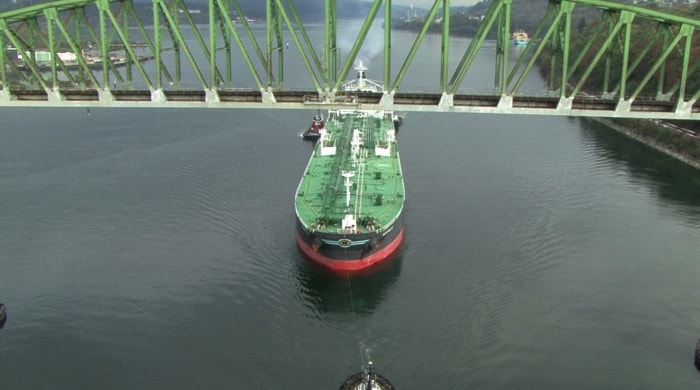Current air quality guidelines for sulphur dioxide pollution levels in the Lower Mainland may be too low to adequately protect human health, according to a Metro Vancouver report.
The regional district, which regulates air quality within Metro and the Fraser Valley, is proposing to slash the maximum acceptable level of the pollutant from 174 parts per billion (ppb) to the same 75 ppb limit adopted in the U.S. in 2010.
Exposure to high levels of sulphur dioxide – most of which comes from shipping – can aggravate asthma and other respiratory problems.
The report says Metro's existing maximum targets for sulphur dioxide are outdated as they were based on national targets drawn up in the 1970s and "may not be protective for all sensitive individuals, particularly asthmatics."
The pollutant also acidifies soil and surface water, damages crops and trees and can damage or discolour structures and property. It can react with other substances to cause smog.
Nearly 80 per cent of sulphur dioxide emissions in the region came from the marine ships in 2010, followed by eight per cent from the Chevron oil refinery in Burnaby and three per cent from cement plants.
The current limit of 174 ppb averaged over one hour was exceeded twice last year in Burnaby's Capitol Hill neighbourhood, which has the closest air quality monitoring station to the Chevron refinery.
If the lower 75 ppb limit had been in place there would have been 17 exceedances in 2013 – 15 at Capitol Hill and two in Port Moody.
"We are concerned about sulphur dioxide levels around Chevron," said Ray Robb, Metro's environmental regulation and enforcement division manager.
The maximum ambient air quality level for a pollutant like sulphur dioxide isn't directly enforceable, nor does Metro issue tickets to ships when levels around Burrard Inlet get too high.
But excessive emissions traced to a specific regulated point source can prompt Metro to give the emitter a pollution abatement order to force it to clean up to get back in compliance with its permit, Robb said.
If existing emissions are often near or over the objective in a neighbourhood where a new industry is proposed, he said, that will guide permitting decisions, potentially prompting Metro to insist on much tighter emission controls as part of approving any new source.
Metro officials say the new lower target is achievable.
An ongoing international shift to low-sulphur marine fuel has been reducing the shipping sector's emissions, which are by next year expected to be down 95 per cent from 2005 levels.
But while individual ships are getting cleaner, the overall number of them coming here is expected to climb as Port Metro Vancouver aims to increase trade through the region.
Kinder Morgan's proposed second oil pipeline would also see it load 400 oil tankers a year, up from around 60 now.
"That's one of our major concerns with the project – whether we can meet these standards if additional tanker traffic comes in," said Vancouver Coun. Heather Deal, chair of Metro's environment committee.
The new Metro standard would be an interim one at least until possible new national or provincial regulations take effect.
A Health Canada review has found a strong link between short-term sulphur dioxide exposure and adverse respiratory health effects, but it's unclear when tighter Canadian regulations might be unveiled and adopted. The B.C. government is also reviewing provincial air quality objectives.

Metro Vancouver graphic.
